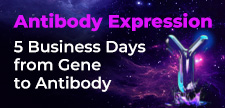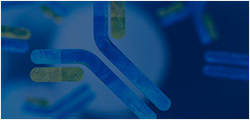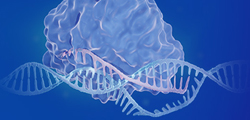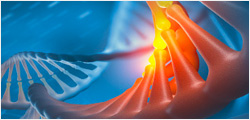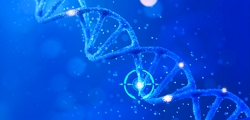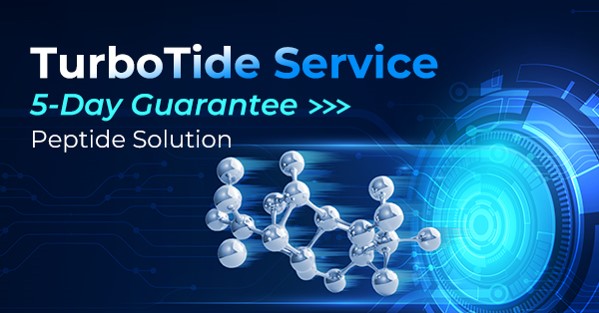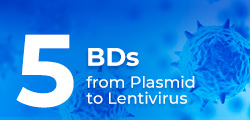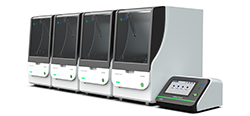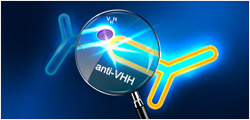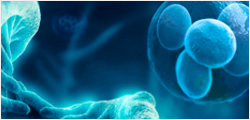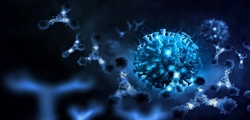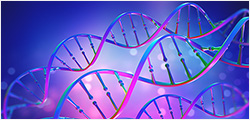-
REAGENT SERVICES
Hot!
-
Most Popular Services
-
Molecular Biology
-
Recombinant Antibody/Protein
-
Reagent Antibody
-
CRISPR Gene Editing
-
DNA Mutant Library
-
IVT RNA and LNP Formulations
-
Oligo Synthesis
-
Peptides
-
Cell Engineering
-
- Gene Synthesis FLASH Gene
- GenBrick™ Up to 200kb
- Gene Fragments Up to 3kb now
- Plasmid DNA Preparation Upgraded
- Cloning and Subcloning
- ORF cDNA Clones
- mRNA Plasmid Solutions New!
- Cell free mRNA Template New!
- AAV Plasmid Solutions New!
- Mutagenesis
- GenCircle™ Double-Stranded DNA New!
- GenSmart™ Online Tools
-
-
PRODUCTS
-
Most Popular Reagents
-
 Instruments
Instruments
-
Antibodies
-
ELISA Kits
-
Protein Electrophoresis and Blotting
-
Protein and Antibody Purification
-
Recombinant Proteins
-
Molecular Biology
-
Stable Cell Lines
-
Cell Isolation and Activation
-
 IVD Raw Materials
IVD Raw Materials
-
 Therapy Applications
Therapy Applications
-
Resources
-
- All Instruments
- Automated Protein and Antibody Purification SystemNew!
- Automated Plasmid MaxiprepHot!
- Automated Plasmid/Protein/Antibody Mini-scale Purification
- eBlot™ Protein Transfer System
- eStain™ Protein Staining System
- eZwest™ Lite Automated Western Blotting Device
- CytoSinct™ 1000 Cell Isolation Instrument
-
- Pharmacokinetics and Immunogenicity ELISA Kits
- Viral Titration QC ELISA Kits
- -- Lentivirus Titer p24 ELISA KitHot!
- -- MuLV Titer p30 ELISA KitNew!
- -- AAV2 and AAVX Titer Capsid ELISA Kits
- Residual Detection ELISA Kits
- -- T7 RNA Polymerase ELISA KitNew!
- -- BSA ELISA Kit, 2G
- -- Cas9 ELISA KitHot!
- -- Protein A ELISA KitHot!
- -- His tagged protein detection & purification
- dsRNA ELISA Kit
- Endonuclease ELISA Kit
- COVID-19 Detection cPass™ Technology Kits
-
- Automated Maxi-Plasmid PurificationHot!
- Automated Mini-Plasmid PurificationNew!
- PCR Reagents
- S.marcescens Nuclease Benz-Neburase™
- DNA Assembly GenBuilder™
- Cas9 / Cas12a / Cas13a Nucleases
- Base and Prime Editing Nucleases
- GMP Cas9 Nucleases
- CRISPR sgRNA Synthesis
- HDR Knock-in Template
- CRISPR Gene Editing Kits and Antibodies
-
![AmMag™ Quatro Automated Plasmid Purification]() AmMag™ Quatro automated plasmid purification
AmMag™ Quatro automated plasmid purification
-
![Anti-Camelid VHH]() MonoRab™ Anti-VHH Antibodies
MonoRab™ Anti-VHH Antibodies
-
![ELISA Kits]() ELISA Kits
ELISA Kits
-
![Precast Gels]() SurePAGE™ Precast Gels
SurePAGE™ Precast Gels
-
![Quatro ProAb Automated Protein and Antibody Purification System]() AmMag™ Quatro ProAb Automated Protein and Antibody Purification System
AmMag™ Quatro ProAb Automated Protein and Antibody Purification System
-
![Target Proteins]() Target Proteins
Target Proteins
-
![AmMag™ Quatro Automated Plasmid Purification]() AmMag™ Quatro automated plasmid purification
AmMag™ Quatro automated plasmid purification
-
![Stable Cell Lines]() Stable Cell Lines
Stable Cell Lines
-
![Cell Isolation and Activation]() Cell Isolation and Activation
Cell Isolation and Activation
-
 IVD Raw Materials
IVD Raw Materials
-
![Quick
Order]() Quick Order
Quick Order
-
![Quick
Order]() Quick Order
Quick Order
- APPLICATIONS
- RESOURCES
- ABOUT US
- SIGN IN My Account SIGN OUT
- REGISTER
News & Blogs » Peptide News » The Future of Neoantigen Vaccines: How Nanoparticles, Liposomes, and Viral Vectors Are Revolutionizing Treatment as Novel delivery System
The Future of Neoantigen Vaccines: How Nanoparticles, Liposomes, and Viral Vectors Are Revolutionizing Treatment as Novel delivery System

Author: Jiazhen Liang
Senior Scientist
Peptide Synthesis Services, GenScriptNeoantigens—tumor-specific peptides derived from somatic mutations—represent a cornerstone of personalized cancer immunotherapy due to their absence in normal tissues, minimizing off-target autoimmunity and central tolerance mechanisms. However, their clinical translation has been hindered by suboptimal immunogenicity, inefficient lymph node (LN) trafficking, and limited cross-presentation by antigen-presenting cells (APCs), particularly dendritic cells (DCs). To overcome these barriers, next-generation delivery platforms have emerged, each leveraging distinct biophysical and immunological principles to enhance vaccine efficacy.
Nanoparticles (NPs)-based vaccines
Mechanisms and Advantages
Nanoparticle (NP)-based neoantigen vaccines focus on the co-delivery of tumor-specific antigens and adjuvants to antigen-presenting cells, such as DCs. In this process, cytosolic delivery and cross-presentation of antigens by professional DCs via the major histocompatibility complex class I (MHC-I) antigen-presenting pathway are essential to trigger robust anti-tumor response. Therefore, to fabricate efficient cancer nano-vaccines, it is critical to develop antigen carriers that act as immune adjuvants, and are capable of shuttling antigens directly into the cytosol of APCs[2].
For cancer immunotherapy, NPs-based vaccine offers distinct advantages.
- Enhanced biodistribution: Efficient accumulation in secondary lymphoid organs, e.g., lymph nodes and penetration of biological barriers.
- Precision co-delivery: Tunable co-encapsulation of antigens and adjuvants for synergistic immune activation.
- Controlled intracellular processing: Improved cytosolic delivery, adjustable antigen release, and promoted cross-presentation in APCs.
Category and characteristic
CATEGORY Key CHARACTERISTICS Organic Nanoparticles - Made of lipids, polymers, proteins, or carbohydrates.
- Include lipidic, polymeric, dendrimer, and protein-based NPs.
- Biocompatible, low toxicity; suitable for hydrophobic antigens.
- Enable targeted and controlled delivery.
Inorganic Nanoparticles (INPs) - Composed of metals (e.g., gold, iron), metal oxides (e.g., iron oxide, silica), or ceramics.
- Exhibit unique optical, magnetic, electronic, or catalytic properties due to crystallinity and plasmonic effects.
- High stability and potential for theranostic applications (e.g., imaging and therapy).
Naturally Derived Nanoparticles - Sourced from or inspired by natural systems.
- Include biological (e.g., exosomes), plant-, bacterial-, and fungal-derived nanoparticles.
- Inherent biocompatibility, prolonged circulation half-life, low immunogenicity.
- Sustainable production; some possess natural adjuvant-like immunostimulatory properties.
Challenges and future directions
Despite their potential, NPs face challenges in poor biocompatibility, particle heterogeneity, and inconsistent manufacturing process, thus limiting their application in clinical trials. Moreover, optimizing particle size, charge, and surface chemistry for optimal lymph node drainage and immune activation remains an active area of research. However, protein-caged nanoparticles such as virus-like particles (VLPs) and ferritin family proteins have attracted much attention in drug delivery due to their good biodegradability, highly ordered structure, and simple and repeatable preparation methods.
Liposomes
Mechanisms and Advantages

Figure 1. Liposomes consist of a phospholipid bilayer surrounding an aqueous core, enabling dual loading of hydrophilic antigens in the core and hydrophobic adjuvants or antigens within the bilayer.
Characteristics and advantages
- Compared with neoantigen alone, liposomes protect antigens from degradation, enhance dendritic cell (DC) uptake, and enable adjuvant co-delivery.
- Compared with viral vectors, liposomes offer greater safety (non-replicating), lower immunogenicity, and simpler manufacturing processes.
- Compared with dendritic cell vaccines, liposomes are no need for ex vivo cell processing.
Advantages Explanation Biocompatibility & Safety Made from natural phospholipids; low toxicity and biodegradable. Targeted Delivery Can be surface-modified to target dendritic cells (e.g., with mannose, anti-DEC-205 antibodies). Co-delivery Capability Simultaneously encapsulate neoantigens and adjuvants (e.g., TLR agonists like CpG-ODN, MPLA). Protection Shield neoantigens from premature degradation in circulation. Enhanced Uptake Promote endocytosis by APCs and efficient cross-presentation on MHC-I (critical for CD8+ T-cell activation). Challenges and future directions
Although liposomes can significantly enhance targeting efficiency and promote cellular uptake, selecting and developing an optimal liposome formulation for neoantigen delivery remains challenging. Moreover, tumor immune escape due to antigenic heterogeneity or downregulation can limit vaccine efficacy. To address this, multivalent liposomes capable of co-delivering 10–20 neoantigens simultaneously offer a promising strategy to broaden T-cell responses and reduce the risk of immune escape. Additionally, stimuli-responsive liposomes (e.g., pH- or redox-sensitive) that enable controlled antigen release in specific microenvironments (such as endosomes or tumor tissues) represent another effective approach to improve vaccine potency
Viral Vectors
Mechanisms and Advantages
Viral vectors are engineered viruses stripped of their pathogenic components but retaining the ability to efficiently deliver genetic material into host cells. In the context of neoantigen-based cancer immunotherapy, viral vectors are used to deliver tumor-specific mutant genes (encoding neoantigens) directly into antigen-presenting cells (APCs), enabling endogenous expression, processing, and presentation on both MHC class I and II—triggering robust CD8⁺ cytotoxic T-cell and CD4⁺ helper T-cell responses.
Characteristics and advantages
- High transduction efficiency: Viruses naturally evolved to enter cells
- Endogenous antigen expression: Allows proper folding, post-translational modifications, and cross-presentation
- Built-in Adjuvanticity: Viral components can activate innate immunity
- Long-lasting cellular responses: Sustained antigen production enhances immune priming
- Multivalent Delivery: Can encode multiple neoantigens in a single vector.
Challenges and future directions
The ability of viral vectors to simultaneously deliver multiple neoantigens is critical for addressing tumor antigen heterogeneity, enabling immune responses against both dominant and subdominant tumor clones and potentially mitigating the risk of immune escape.
However, a major challenge in the clinical application of personalized cancer vaccines is the need for rapid, reliable manufacturing and timely administration of patient-specific formulations—particularly for individuals with advanced-stage disease. Addressing these two challenges—broad antigen coverage and accelerated production timelines—is essential for the successful translation of personalized vaccine therapies.
Partner with Us in Neoantigen Vaccine Innovation
At GenScript, our R&D team engineers neoantigen-delivery systems across all scales—from protein-caged nanoparticles and multivalent liposomes to viral-vector platforms—enabling seamless translation. We partner with academia and industry to resolve every bottleneck, from antigen selection and adjuvant pairing to scalable, GMP-compliant manufacturing.
Explore our neoantigen service—bridging discovery, delivery, and development—for your next-generation cancer vaccine project.
Looking for reliable solutions in neoantigen peptide manufacturing?
Contact our peptide team to learn about GenScript neoantigen solutionsRelevant Resource:

References
-
1. Zheng W , Li S , Shi Z ,et al.Recombinant ferritin-based nanoparticles as neoantigen carriers significantly inhibit tumor growth and metastasis[J].Journal of Nanobiotechnology, 2024, 22(1).DOI:10.1186/s12951-024-02837-2.
-
2. Xu J , Lv J , Zhuang Q ,et al.A general strategy towards personalized nanovaccines based on fluoropolymers for post-surgical cancer immunotherapy[J].Nature Nanotechnology, 2020, 15(12):1-10.DOI:10.1038/s41565-020-00781-4.
Subscribe to Receive Updates
& Promotions From GenScript* We'll never share your email address with a third-party.
Latest News & Blogs
Find More Peptide NewsThe Future of Neoantigen Vaccines: How Nanoparticles, Liposomes, and Viral Vectors Are Revolutionizing Treatment as Novel delivery System

Unveiling the Potential of GLP-1 Receptor Agonists and Multi-Target Therapies

Challenges in Neoantigen Peptide Manufacturing | GenScript

Challenges & Innovations in Neoantigen Peptide Vaccine Production

The Clinical Application of Neoantigens: A Promising Frontier in Cancer Immunotherapy

Delving into the World of Cyclic Peptides: Harnessing the Power of Circular Molecules for Innovative Therapeutic Solutions


-

